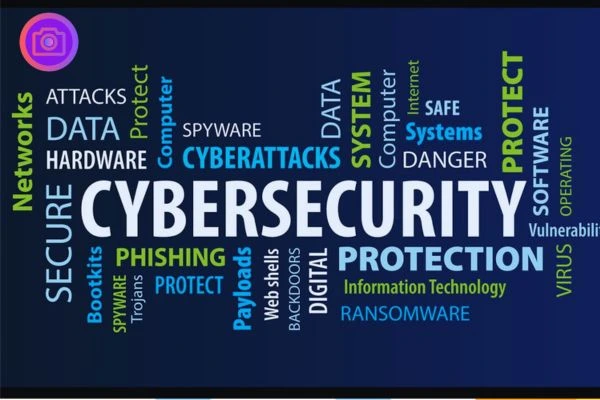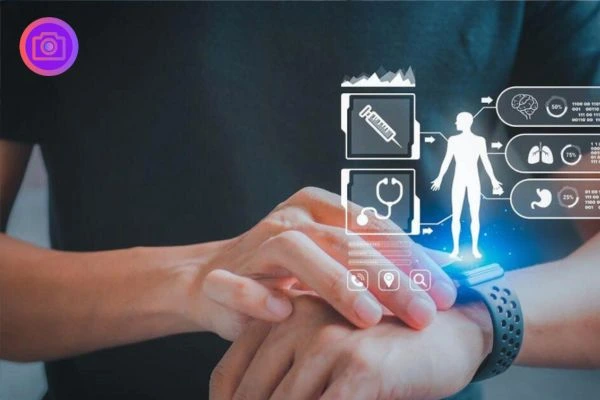
How to Use Instagram Reels and TikTok for Business Growth
June 23, 2025
The Rise of Casino Influencers on Instagram and Other Social Channels
July 1, 2025Explore types of cybersecurity, how it works, benefits, threats, and safety tips to protect data, networks, and devices in our increasingly digital world.
Whereas, in today’s digitally connected world, cybersecurity becomes more and extremely applicable as we apply the internet and digital technologies in many things around us. Digital systems provide everything from banking to healthcare, entertainment to education, and other services.
Definition of Cybersecurity
Cybersecurity involves activities that have the intention to defend systems, networks, and information against different risks that occur in cyberspace, including hacking, phishing, and malware attacks. It also consists of the protection of information stored in those systems, which are safeguarded by confidentiality, integrity, and availability, and the likelihood of unauthorized access, breach of data, or attack is increasing.
Types of cybersecurity
Different aspects include the following types of cybersecurity: they all basically focus on the protection of a certain aspect of digital systems and data. Together, they form a unified defense strategy:
1. Network Security
Network security shall protect the network from internal side of attacks by firewalls, IDS, and VPNs. The main purpose is to prevent unauthorized access, detect any threats, and ensure safe data transfer.
2. Information Security (InfoSec)
Security of databases includes protection of all objects of databases against unfriendly attacks and unauthorized access. In simple words, the database security consists of confidentiality, integrity, and availability.
3. Application Security
The confidentiality of the information is protected from unauthorized access through various techniques such as authentication and authorization functions for the users and groups. The integrity of the data is assured by providing the functionality of modifying or deleting data.
The availability of the data is assured by giving the right to set the accessibility type to users by using the role-based access control.
4. Cloud Security
Organizational policies and practices observe the risk prevention measures that people have to take while they have access to the business-related operational activities. Security principles within an organization will determine a company’s security requirements and how users should maintain these security policies.
5. Endpoint Security
Codenamed ‘Cybersecurity’, this is the security technology in the new form of electronic communication worldwide, a technology dedicated to the security of digital data transfers for personal use. Thus, a solution enhancing data security within an organizational framework can be normally used.
6. Operational Security (OpSec)
Database confidentiality, integrity, and availability may be defined as: confidentiality means protection against unauthorized disclosure; integrity is unauthorized modification and destruction; availability means an assurance that the data will be available whenever intended.
7. Identity and Access Management (IAM)
Physical and logical access management is really about who has been given access to which resource and data. Password managers, two-factor authenauthenticationbiometrics are some examples of these methods, and all aim to exclude unauthorised persons from accessing information and systems and manage insider threats.
8. Mobile Security
It refers to the protection of mobile devices such as mobile phones and tablets against threats from malware, app-based threats, as well as intentional or accidental data leaks. Mobile security may include a form of device management application and app permission control as part of its overall security mechanism.
9. IoT Security (Internet of Things)
Internet of Things (IoT) security refers to security practices for internet-connected smart devices such as smart TVs, wearables, home systems, etc., in favor of securing information as well as preventing possible entry points for hackers and cyber threats.
10. Disaster Recovery and Business Continuity
Disaster recovery deals with restoring systems’ functionality after cyber attacks or failures through data backup, incident response plans, and good recovery methods. Each has its significance in forming a multi-layered defense against a mix of cyber threats.
Benefits of cybersecurity
1. Regulatory Compliance
Cybersecurity is not just about making organizations compliant with the laws and regulations set, for example: the General Data Protection Regulation (GDPR), Health Insurance Portability and Accountability Act (HIPAA), Payment Card Industry Data Security Standard (PCI DSS), but it also acts to prevent penalties and enhance the customer’s confidence in the organization that sensitive information is managed and protected appropriately.
2. Boosts Productivity
Curb downtime mostly caused by viruses, ransomware, or data breaches. Help the staff work in a smooth way by creating an easy operating environment for delivering faster services.
3. Business Continuity
A cybersecurity strategy will be strong enough to protect from interruptions to central data and critical infrastructure by allowing organizations to exercise organizational functions and recover quickly from attacks, reducing and saving associated financial and reputational costs.
4. Career Growth
Security professionals today are assured of countless job opportunities, enticing salaries, and promising prospects among many sectors like finance, health, and government, with a future-proof profession as they face an ever-increasing need for cybersecurity skills.
How Does Cybersecurity Work?
Cybersecurity involves the ation of technological, process-based, as well as activity procedures to ensure that an organization’s systems, networks, and data assets are secured against various cyber threats.. Here’s how to cross-cut in layers that way:
1. Prevention (Defense)
And Cybersecurity, primarily blocking threats from inflicting damage using it includes:
- Firewall: It regulates traffic that flows in and out of the environment.
- Antivirus/anti-malware: This is used for the detection and removal of malware.
- Encryption: This is an unauthorized user access bypass and hence renders the information unreadable for unauthorized users.
- Authentication and access control: Determine the right of access to infrastructure (like passwords, biometrics, etc.) for only certain individuals.
2. Detection
Even with the defenses, it considers the possibility of an intrusion attack. Cybersecurity tools are used to observe systems for such acts as showing evidence of suspicious activities:
- Intrusion Detection Systems (IDS): Generally, these are alerts regarding possible breaches.
- Security Information and Event Management (SIEM): Collects and analyzes live logging.
- Anomaly Detection: Finding abnormal activity using AI and behavior analytics.
3. Response
Quick action is taken when the threat is discovered:
- Incident Response Teams (CSIRT): Investigate and contain threats.
- System Isolation: Disconnect infected systems to prevent spread.
- Patching: Fix vulnerabilities exploited during the attack.
4. Recovery
Recovery efforts for cybersecurity after an attack are over:
- Data Backups: Restoration of lost or corrupted data.
- System Restoration: Recreating systems from safe backups.
- Post-Incident Analysis: Understanding the event to prevent a recurrence.
5. Ongoing Protection
Cybersecurity is not a one-time, quick-fix remedy but rather continuous:
- Updating and patching regularly.
- Employee training and awareness
- Penetration testing and risk assessment.
- Alignment with the standard and then the compliance with the situation..
Why is cybersecurity important?
Cybersecurity protects sensitive data and other entities such as organizations, infrastructure from adverse attacks and unauthorized access. Nowadays, in the digital age, not only people but also corporate people as well as the government keep on relying on technology. Hence, they come under the fire range of threats given by cybercriminals. The importance of cybersecurity is explained below.
1. Protects Sensitive Data
Involvement of cellular calls, messages, and other means of communication can prevent or reprieve from covering, stealing, or losing loss of particular, financial, and confidential data-including credit card data, history of health, and even secrets involved with the company.
2. Prevents Financial Loss
Financial losses from cyber attacks due to fraud, ransom payment, system unavailability, and legal fines can be really high.
3. Ensures Business Continuity
Effective cybersecurity protection operation and prevention of disturbances that may come as a result of data breaches, malware, or system crashes.
4. Builds Trust
By displaying good cybersecurity measures and safeguarding customer and user data, there is a higher chance of customers and users trusting the organizations.
5. Defends National Security
To avoid compromise by foreign or terrorist agencies, government cybersecurity is vital in ensuring that important infrastructure and military systems, as well as sensitive information, are rendered safe.
6. Mitigates Evolving Threats
As new cyber threats emerge, dynamic cybersecurity is increasingly becoming important in adapting to new threats and reacting within a short time. In simple terms, cybersecurity implies the attainment of safety, privacy, stability, trust, and fluidity against this emerging digital civilization.
Disadvantages of cybersecurity
1. Complexity
Proper cybersecurity systems cannot be established without superior knowledge, multi-layered systems, and continuous updates; thus, it is not simple and easy to maintain, particularly in small firms that, in most cases, have limited expertise.
2. Constantly Evolving Threats
Cyber threats are dynamic and demand constant changes in monitoring. Security assumptions made today are likely to become false tomorrow due to the ever-changing landscape of cyberspace, thus requiring a gigantic effort to ensure resources are invested to keep up.
3. Stress
Cybersecurity professionals face extreme stress, given the demands of stopping breaches, incident responders in minutes, and a 24×7 environment of threats intended to cripple entire organizations.
4. False Sense of Security
Excessive dependence on cybersecurity tools may generate complacency. The notion that believing systems are completely safe may make users or organizations overlook some of the elementary best practices and put themselves at unnecessary risk.
5. Human Error
Human errors, such as clicking on a phishing link or weak passwords, can break the strongest of security systems. None of the software will be able to get rid of risks introduced by users.
Achieving Comprehensive Cybersecurity with Check Point
Check Point provides exhaustive cybersecurity through a unified, prevention-driven strategy. It protects networks, cloud, endpoints, and mobile devices using evolved threat prevention, AI-based intelligence, and unified management.
Infinity Architecture and Harmony are some of the solutions that can keep organizations safe in real-time, ensure scalability, and allow simplified control, thus remaining resilient in the face of dynamic cyber threats.
FAQs
Is cybersecurity only about technology?
No. While technology-first, cybersecurity involves policies, risk management, employee training, and legal issues.
Who needs cybersecurity?
Regardless of whether a person operates a smartphone or a Disney computer or whether he or she is an invited official in some big company or government, everyone has something to do with cybersecurity. Almost all computers are directly or indirectly connected to the internet, thus making them viable targets for threat attacks.
Can cybersecurity stop all cyberattacks?
The beauty of the system is that none of them is secure at all. It provides them with a great reduction of risk by a long shot; however, attackers are always at their job with upgraded tactics. The ideal condition is to always minimize as many vulnerability points as possible, early detection of threats, and an effective response.
Conclusion
Cybersecurity is actually necessary in this era of digitalization as this will be able to offer a safeguard to the citizens against the ever-evolving cyberthreats. A lesson on different types of cybersecurity and how they work will serve as a guide for both the experts and the laymen to further protect themselves, their information, and have a higher level of trust, reliability, and continuity in an increasingly integrated technology environment.




